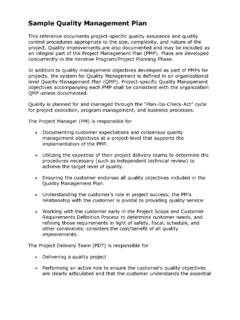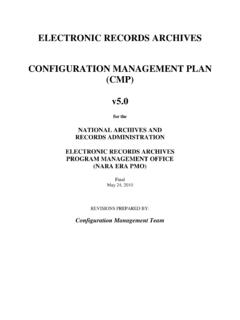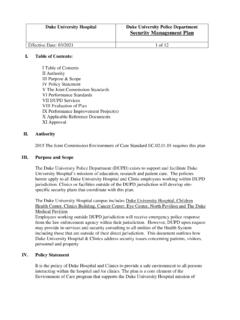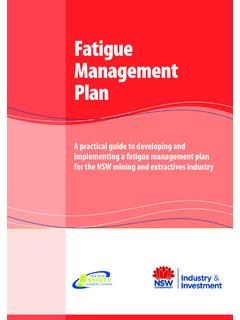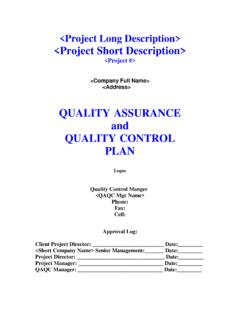Transcription of Infection Control Prevention Plan - U.S. Compliance
1 Infection Control AND Prevention plan Company Name Street Address City, State Zip CARE | PROTECT | GROW Company Name Page 2 Infection Control and Prevention plan TABLE OF CONTENTS 1. POLICY .. 3 2. PURPOSE .. 3 3. SCOPE .. 3 4. DEFINITIONS: .. 3 5. PLANNING CONSIDERATIONS: .. 4 6. RESPONSIBILITIES: .. 4 7. EXPOSURE CONTROLS AND PERSONAL PROTECTIVE EQUIPMENT .. 7 8. COMMUNICATIONS .. 9 9. EMPLOYEE TRAINING .. 10 10. EMERGENCY RESPONSE PERSONNEL & EPIDEMIC RESPONSE .. 10 11. REVISION HISTORY .. 12 Company Name Page 3 Infection Control and Prevention plan 1. POLICY Company Name is committed to providing a safe and healthy work environment for its employees. To accomplish this goal, the following Infection Control and Prevention plan is provided to eliminate or minimize occupational exposure to infectious illness.
2 The exposure Control plan is reviewed and updated as needed. In addition, the plan is reviewed and updated as situations change and to reflect the latest technological advances. By doing this, Company Name is protecting its employees to the best of their knowledge. 2. PURPOSE This plan outlines policies, procedures, practices, equipment, and personal protective equipment to be followed and used when potential exposure to infectious illness may occur. Infectious illnesses are unpredictable but recurring events that can have consequences on human health and economic well-being worldwide. Advance planning and preparedness are critical to help mitigate the impact of an epidemic. Our goal is continual improvement on employee safety and business continuity, while addressing associated areas of safety and Compliance . By accepting mutual responsibility to operate safely, management , supervisors, and employees all contribute to the well-being of personnel and subsequently, the company.
3 3. SCOPE Company Name has established and implemented a Control plan which integrates safety and health measures in the event of an epidemic, so that safety, health, and job performance become synonymous. The intent of a formal plan is to provide a framework for organizational infectious disease preparedness. A plan that is: Adaptable to meet the organizational needs Identifies areas in need of enhanced PPE protocol Identifies the need for enhanced employee Infection Prevention education 4. DEFINITIONS: Infectious Diseases - A disease caused by organisms including bacteria, viruses, fungi and parasites. Infectious diseases are frequently harmless, but effects can range from mild inflammation to epidemics with significant mortality. Contagion A disease that spreads by direct physical contact between people or animals. It is spread by touching items an ill individual has touched.
4 It can also be spread airborne by droplets expelled when the afflicted person speaks, coughs or sneezes. All diseases are infectious but only some are contagious such as Small-Pox and Influenza. Epidemic A widespread occurrence of a communicable disease within a community at a particular time. Pandemic An epidemic that has spread across several continents or worldwide. Company Name Page 4 Infection Control and Prevention plan 5. PLANNING CONSIDERATIONS: Time There may be a matter of weeks to three months warning from the time a viral pathogen with epidemic potential is announced to impact of operations. The epidemic may last as long as eighteen months with the impact occurring in waves. Severe periods with spikes of cases may last 1-4 months. Staffing & Absenteeism Absenteeism of 15-50% of facility employees, vendors, temporary employees and service providers may occur.
5 Every employee that is infected will likely be absent for a few days up to four weeks. In a severe epidemic - of employees who become ill may die. Treatment & Vaccination Current antiviral medications may not be effective against novel viruses. A vaccine may not be available for 12-18 months after identification of a novel virus. Social distancing strategies may be required to slow the spread. Isolation of sick people will be necessary. Self-isolation and/or quarantine of people who have close contact with sick people will likely be needed for a time period equal to the incubation time of the virus. Suppliers, Vendors, Contractors and Products Utility infrastructure and public services will be stressed. Essential supplies, materials and services provided by contractors, vendors and consultants will be affected and possibly irregular.
6 6. RESPONSIBILITIES: management , supervisors, and employees are responsible for maintaining a safe and healthy work environment. Although roles and objectives may need to be altered during an outbreak, the scope and results are the same improve overall safety awareness and increase Prevention of an infectious disease or contagion. The Program Administrator is responsible for the implementation of this exposure Control plan . The Program Administrator oversees all operations to maintain and provide all necessary and related supplies, controls and information to employees on proper behaviors and work practices. Program Administrator: Formal Title of Designated Administrator The Program Administrator and designees will complete the initial Infection Control and Prevention management Checklist and communicate to the designated team members and leadership.
7 This checklist is intended for planning purposes. Employers and workers should use this planning guidance to help identify risk levels in workplace settings and to determine any appropriate Control measures to implement. Company Name Page 5 Infection Control and Prevention plan Checklist can be found as an additional form with the Infection Control and Prevention plan . Additional guidance may be needed as outbreak conditions change, including new information about the illness, its transmission, and impacts becomes available. Alert Level based on events are established for implementation of plan procedures and used in planning of the response following announcement of potential epidemic. Refer to Section 10. Refer to the facility Contingency or Emergency Response plan for additional emergency contact information. Refer to the facility Business Continuity plan for additional planning information.
8 management Responsibilities: management will support this program to help ensure employee Health and Safety. management will support the implementation of controls outlined in Section 7 of this plan as needed and as the situation evolves. management will set and model the expectation that sick employees must stay home. In severe cases, management will investigate and implement remote work arrangements for all employees who are able to do so. management will communicate travel limitations to employees for business and the possible implications that personal travel could have. management will provide employees with relevant updates and information. Communicate necessary safety information from the Centers for Disease Control (CDC) or state and local health departments including a review of symptoms for supervisors to be aware of when monitoring or interacting with employees.
9 Communicate the organization s expectations of employees and what they can expect from the organization. Provide Infection Prevention awareness training as outlined in section 9 of this plan to all employees in a manner indicated by the situation face to face, computer-based training, remote, etc. management is also responsible for limiting the negative impact on safety and business continuity. Additional management considerations specific to this plan include: Possible temporary adjustment to the organization s sick-leave, health care, remote work and pay policies to encourage sick employees to stay home and remain home until symptoms resolve, provide care to sick family members or as part of required mitigation strategies. Supervisor Responsibilities: Supervisors must be committed to the ongoing health and safety of employees and must be able to effectively communicate and enforce all safety and health policies and procedures.
10 The responsibility of leadership typically involves: Reminding employees to use proper hand hygiene. Company Name Page 6 Infection Control and Prevention plan Encouraging employees to stay home and requiring them to leave work if they are symptomatic. Providing PPE as required for situation, assigned tasks and possibly employee comfort. Ensuring voluntary respirator wearers are properly trained. Ensuring hand washing supplies and hand sanitizer are replenished as needed. Following up with employees who are out of work while sick with an infectious illness, especially employees who are vulnerable or living alone. Isolating employees at work who exhibit infectious illness-like symptoms until they can arrange transportation home. Increasing space to at least three feet and limiting face-to-face contact between workers.
